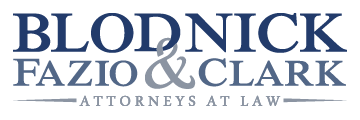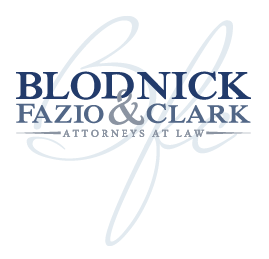Real estate deeds are legal instruments that are used to transfer ownership of real property including the land and its improvements (such as a house or buildings) and attachments. Words used to effectuate the conveyance of property may be grant, assign, convey or warrant, but they basically all do the same thing, they transfer the interest of the person or entity selling the property to the person or entity buying the property.
Deeds are recorded at the county or city recorder’s office and become a matter of public record putting the world on notice of the ownership of any particular parcel of real property. Anyone can go to the local recorder’s office and view a copy of the most current deed for a property as well as all of the prior deeds for a particular property.
In New York, the instrument conveying title, the deed, can take a number of different forms, but the following describes the most common deed forms in New York State.
Bargain and Sale Deed. This form of deed is most commonly used in downstate real estate transactions (i.e. New York City, surrounding suburbs, and Long Island). The recipient of a bargain and sale deed is acquiring real property without knowing if there are any encumbrances on it unless stated in the deed. The grantor of the deed only guarantees that the grantor has a title, and does not guarantee that the title is free of defects. This form of deed implies that the grantor holds title to the property, but the deed does not warrant against any encumbrances. Since a bargain and sale deed does not warrant good title from the grantor, the grantee could be in trouble if title defects appear at a later date. For this reason, the use of a bargain and sale deed is most often coupled with the buyers’ separate purchase of a title insurance policy which does warrant good title. The combination of a bargain and sale deed and owner’s policy of title insurance usually is sufficient to give a buyer reasonable comfort that it is acquiring good title to a property, and it serves to shifts some of the risks of delivering good title from the seller to the title insurer. Bargain and sale deeds can include covenants against grantor’s acts which is a promise within the deed instrument by the seller that it has not done any act which would encumber the title it seeks to convey. In other instances, the bargain and sale deed might not contain such a covenant which transfers more of the risk of the delivery of good title to the title insurer.
Warranty Deeds. Warranty deeds are customarily used in upstate New York real estate transactions but can be used anywhere in New York State. Warranty deeds contain three main guarantees that: (1) the grantor has not sold the property to anyone else; (2) the property is not burdened by any encumbrances apart from those the seller has already told the buyer about; and (3) the grantor will warrant and defend title against the claims of all persons. This means the seller is guaranteeing the grantee that title is free of any defects that may affect the title to the real property being transferred, even if the defect was caused by a prior owner.
Quitclaim Deeds. Quitclaim Deeds (also sometimes erroneously referred to as “quickclaim” or “quick claim” deeds) are used to convey any interest that the grantor might possess in the property. The grantor might be the legal owner or the grantor might never have formally been identified on a deed describing the property. Through a quitclaim deed, the grantor is essentially disclaiming and turning over its interest (without necessarily defining what that interest, if any might be) to a grantee. Quitclaim deeds are often used during a divorce or estate administration, to deed the property from one spouse or beneficiary to another. If a married person or beneficiary of an estate holds title to a property as sole and separate or perhaps he or she acquired the property before marriage or death of a decedent, the spouse or beneficiary not in title might be asked to sign a quitclaim deed when the property is sold to a third party, just to make sure the spouse or beneficiary who was not on the deed does not later come back and lay claim to the property.
Other Types of Deeds.
Tax Deed. When property taxes are unpaid (the numbers of delinquent years vary from state to state), and the property is sold for the payment of back taxes, typically a tax deed is used to convey title to the buyer.
Deed-in-lieu of Foreclosure. Sellers who are behind in payments to the lender will sometimes negotiate with a lender to accept a Deed-in-Lieu of Foreclosure, which means the seller has deeded the property to the lender to avoid foreclosure.
James E. Clark is a New York real estate attorney. For more information on the types of deeds that might be appropriate for any specific transfer of title, to have a deed drafted an recorded or other options please visit our website at bfclaws.com, call our office at 631-539-8889 during regular business hours or feel free to e-mail Mr. Clark at JClark@bfclaws.com.
Legal disclaimer: IMPORTANT LEGAL NOTICE: This post is not legal advice does not create an attorney-client relationship. This and all posts on this website are intended as general information and are provided for educational purposes of the public, not any specific individual. If you would like to obtain specific legal advice about this issue, please contact an attorney in your state. Mr. Clark is licensed to practice law in New York.



Hi,
What is the process called when a spouse adds his wife’s/husband’s name to the deed?
I have a friend who did this and a Bargain of sales deed with Covenants was used for this transaction.
Is that the correct way to do this?
There are several ways to accomplish this. To pick the right method we should review the reason you seek to change the title. Is it an estate planning tool, an asset protection mechanism, or a simple addition? Tax implications should be considered as well. We recommend that you contact our office at 631.669.6300 or 516.280.7105 for a free consultation to discuss the matter further.